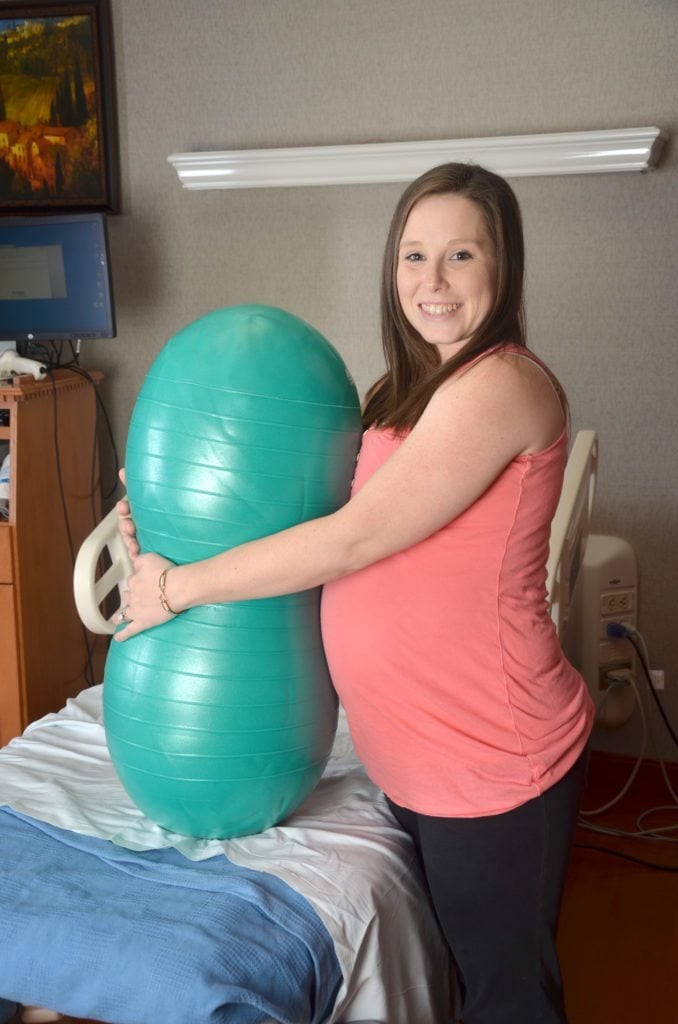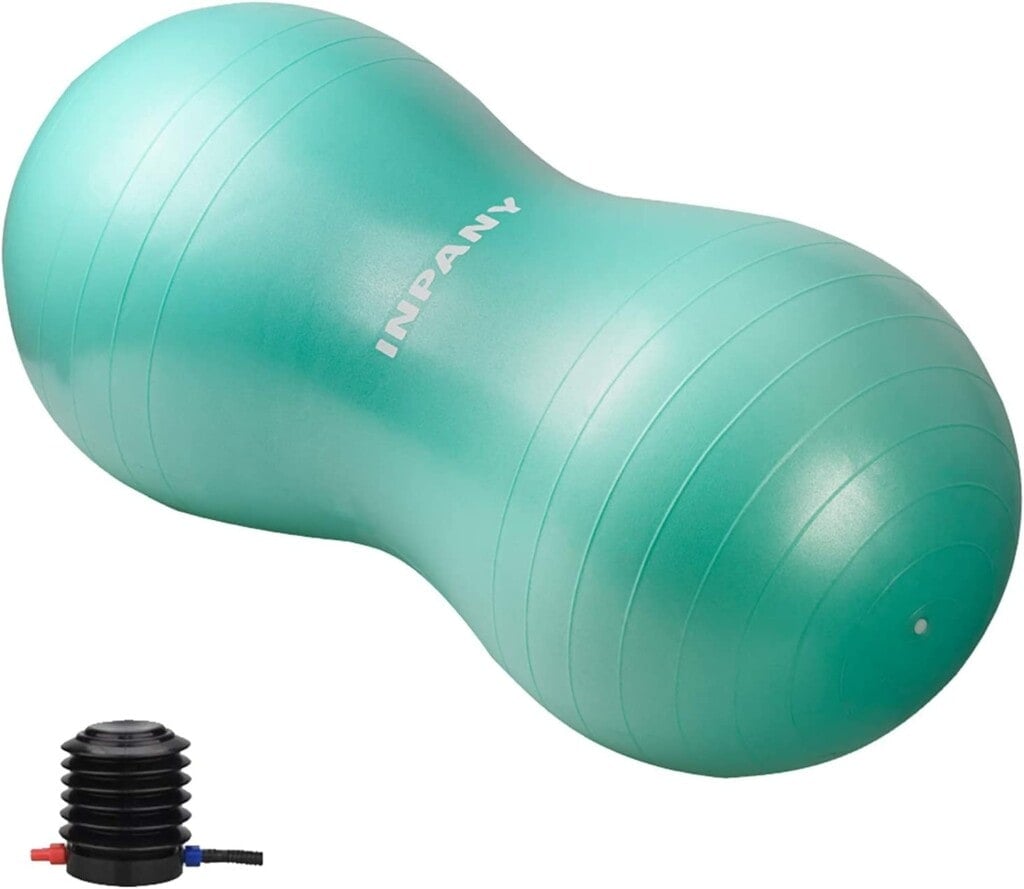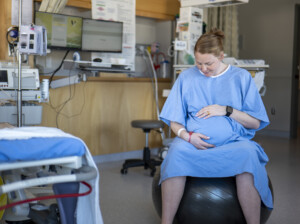You may know or have heard what a birth ball is, but do you know what a peanut ball is? (No, it’s not a delicious popcorn treat.) Unfortunately, most women have no clue when asked this question. I wasn’t familiar with them until a few years ago when a birth doula client wanted to use a peanut ball for her labor. I discovered they benefit pregnant mamas during labor, so I want to share this information with you!
What is a peanut ball?
A peanut ball is an exercise or therapy ball shaped like a peanut. It has an oblong shape, larger on each end and slightly narrower in the middle. They are used for various strength training and physical therapy needs and laboring women. They are becoming more and more popular with pregnant women during childbirth. Here’s why…

How to use a peanut ball
Peanut Balls are for every type of birth since they can be used at hospital births, birth center births, and home births. You can use them in many different positions. However, they are most commonly used for women in bed (or need to remain in bed) during labor. There are always points in labor when a woman wants to sit or lie in bed, whether she has pain medication or not. She may be tired, feel more comfortable in bed, or want an epidural. These are all times when you can use a peanut ball! Here are the two typical ways that peanut balls are used during labor:
1. The laboring mother is in a semi-reclined position, with one leg over the ball and the other leg to the side of the ball. The doula, nurse, or other support person pushes the ball as close to the mother’s hips as tolerable to her. Many feel this position promotes cervix dilation and descent with a well-positioned baby.
2. While the mother is in a side-lying or semi-prone position, the peanut ball lifts the upper leg and opens the pelvic outlet. Many feel this position helps rotate a baby from a less-favorable posterior position to a more favorable position for delivery.
Both of these are great positions for women who have an epidural. I recommend using a peanut at every birth, but I especially recommend them to women who want an epidural. Again, this is something you can do to help your labor progress and the descent of your baby in your pelvis.

There are 19 different positions that you can do with a peanut ball to help you during labor. Pretty amazing! Here are two peanut ball charts showing pictures of these positions and the position’s name. These charts are perfect for sharing with your doula, childbirth educator, midwife, care provider, or labor and delivery nurse. You may even teach them a thing or two!
Additionally, here are some great videos that can help. They show you exactly how to use a peanut ball and explain how to get the right size.
Are you having your baby outside the hospital and curious about what positions you can do with your peanut ball?
There are some great things that you can do with a peanut ball to help progress your labor when you’re at home. If you’re having your baby at home or a birth center, this chart includes 10 different positions and information on which position to use when your baby is above the inlet, mid-pelvis, or outlet. These will be helpful if your baby is in an unfavorable position or has a hard time getting lower in your pelvis.
The benefits of using peanut balls for labor
Research shows three noticeable benefits in women who used a peanut ball during labor:
Shorter labors
According to 2011 research, women who used the peanut ball had an average of 90 minutes first stage of labor. They found that “the peanut ball during labor for patients with an epidural, compared with standard nursing interventions, did significantly reduce the length of labor, without adverse neonatal outcomes.”1
Shorter pushing phase
Additionally, the 2011 research showed that these women who used a peanut ball pushed for an average of 23 fewer minutes than those who did not.1
Fewer C-Sections
A study was conducted to examine the effect of nurse-driven intervention using a peanut ball with position changes on the length of labor and incidence of cesarean birth among women who receive epidural anesthesia. Women who used the peanut ball were 50% less likely to have a cesarean delivery.2 In another study, women who used a peanut ball were less than half as likely to undergo cesarean surgery.3 This is a major benefit as many hospitals are trying to reduce c-section rates, as c-section deliveries typically take longer to recover from and have more potential for complications.4 They also cost more, so there is potential to save money for patients and hospitals.
These effects were especially pronounced in women who had an epidural. However, using a peanut ball would be effective for any woman who needed to lie down on her side during labor.
Where can I get one, and what size do I get?
Peanut balls come in 4 different sizes. Not every peanut ball is suitable for every mama. It’s not a “one size fits all” type of deal. To make sure that you have the right size, see the recommendations below:
- 40cm — Recommended for women who are under 5’3″
- 50cm — Recommended for women who are 5’3″ to 5’6″ (The most common size)
- 60cm — Recommended for women who are 5’7″ or taller or obese women
- 70cm — ONLY to sit on and straddle
As for purchasing a peanut ball…you could buy one from Amazon. However, make sure they are rated for pregnancy. So again, we recommend purchasing one that is specifically rated for pregnancy.

Did you use a peanut ball during labor? What was your experience like using one?


































